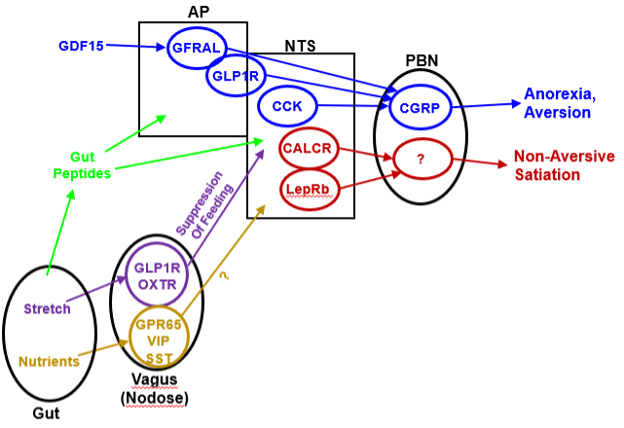
Figure 4. Emerging circuitry of gut-brain pathways that control food intake. A variety of signals converge on the hindbrain to suppress food intake. This includes a variety of gut peptides and the stress/inflammation signal, GDF15, as well as vagal sensory neurons whose soma reside in the nodose ganglion. Stretch-sensing vagal afferents that express GLP1R and/or OXTR suppress feeding via the NTS (although their particular cell targets in the NTS remain to be defined). In contrast, nutrient-sensing vagal neurons (including those that express GPR65, VIP, and/or SST) do not appear to control feeding; their precise function remains undefined. Many populations of AP/NTS neurons promote the aversive suppression of food intake by projecting onto CGRP-expressing cells of the PBN. Other neurons of the NTS (including those that express CALCR and LepRb) suppress food intake without promoting aversive effects, at least in part by activating a poorly-defined set of non-CGRP neurons in the PBN.
